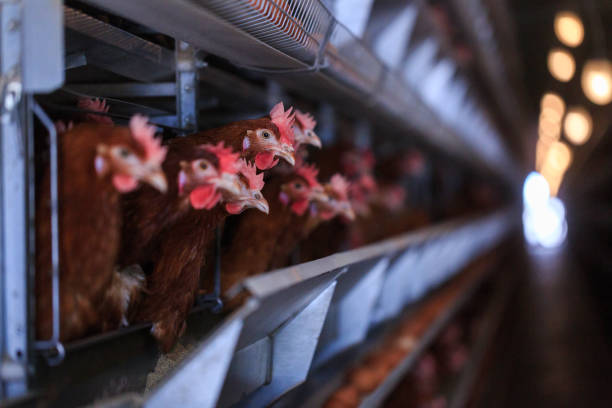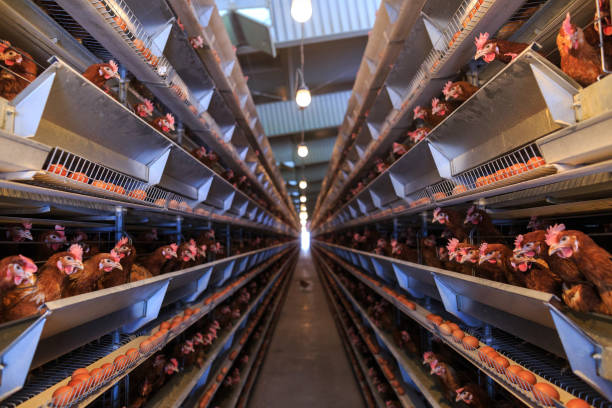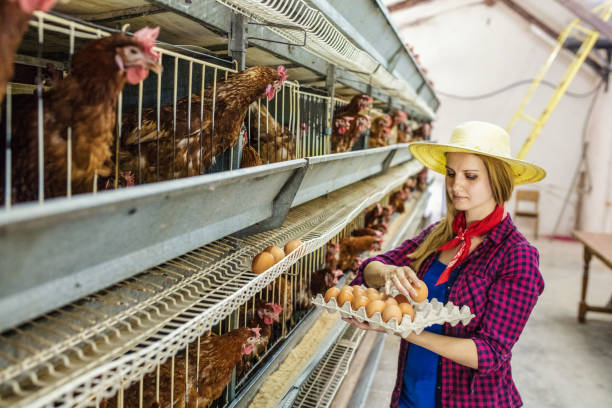Chicken Cage System for 30,000 Chickens – Egypt
Chicken Cage System for 30,000 Chickens – Egypt
Setting up a large-scale poultry farm in Egypt? A well-designed chicken cage system for 30,000 chickens can make all the difference between profit and loss. With rising demand for poultry products across Egyptian cities like Cairo, Alexandria, and Aswan, commercial farmers are turning to automated, space-efficient solutions that maximize egg production and bird health. At Livi Machinery, we specialize in building customized cage systems tailored to local climate conditions, feed availability, and operational goals. Whether you’re planning a layer farm, broiler facility, or integrated poultry operation, designing the right layout is the first step toward long-term success.
Planning Your 30,000-Bird Poultry House Layout
Before choosing equipment, it’s essential to plan your poultry house properly. For a flock of 30,000 chickens, especially under hot Egyptian conditions, airflow, ventilation, and cooling systems are critical. Each bird needs around 550–600 cm² of space depending on breed and purpose—layer hens require slightly more room than broilers when mature. That means you’ll need roughly 1,800 square meters (about 19,400 sq ft) of floor space. But here’s where smart stacking makes all the difference: with multi-tier cage systems, you double or even triple capacity without expanding your building footprint.

We recommend using a 3- or 4-tier cage system, which not only saves space but also improves labor efficiency and hygiene control. Our standard 4-tier automatic chicken cages include features like automatic feeding, drinking lines, manure removal belts, and egg collection belts—all designed to reduce human intervention and maintain consistency. In Egypt’s dusty and arid environment, we reinforce materials against corrosion and use powder-coated steel frames that resist rust from cleaning and humidity. We’ve installed these systems across the Nile Delta and Western Desert farms, proving they work even in extreme temperatures.
Key Components of a High-Efficiency Chicken Cage System
When scaling up to 30,000 chickens, cutting corners on components isn’t an option. Every part must be reliable and built for durability. Let’s break down what goes into our turnkey solution:
The core is the galvanized steel cage structure—strong enough to last over 15 years while resisting deformation. Cages come with plastic-coated mesh floors designed to support bird weight while allowing droppings to fall through, minimizing disease risk. The size per unit varies based on configuration, but each section typically holds 4–6 birds comfortably.

Then there’s the automatic feeding system, featuring chain-driven trays or tube-based distributors that deliver feed evenly across all levels twice a day. This eliminates overfeeding and waste—common issues in manual systems. Combined with an automatic nipple drinking line, water supply becomes efficient and hygienic. These lines prevent contamination and leakage, reducing humidity buildup inside the house—a major concern in summer months.
One of the biggest advantages of our system is the belt manure removal setup. Instead of shoveling waste daily, farmers activate conveyor belts located beneath each tier. Manure is collected every 1–2 days, significantly lowering ammonia levels and improving air quality. Some customers even use this dried manure as organic fertilizer—turning waste into extra income.
For layer operations, adding an egg collection belt speeds up harvesting and keeps eggs clean. Eggs roll gently from the nesting area onto a moving belt, transported straight to the packing station. Less handling means fewer cracked eggs and better biosecurity.
All of these components can be controlled via a central management panel, some with optional remote monitoring via smartphone apps. Yes, modern farming is smart farming—and Egyptian producers are starting to see the ROI fast.
Climate Control & Energy Efficiency in Egyptian Conditions
Egypt’s climate poses real challenges: scorching summers, frequent power fluctuations, and occasional sandstorms. That’s why a chicken cage system here must go beyond just housing birds—it has to protect them. Heat stress alone can reduce egg production by 20% and increase mortality rates dramatically if not managed.
Our poultry houses integrate cooling systems including evaporative pad fans, tunnel ventilation, and roof insulation layers that reflect sunlight. In desert regions, we also suggest installing fogging systems or shade nets outside windows to lower incoming air temperature. Inside, axial fans run continuously during peak heat hours, ensuring fresh air circulation at bird level.
Power reliability matters too. While most farms rely on grid electricity, many clients pair their automation with solar inverters or backup generators. Our equipment operates efficiently on low voltage and includes surge protection—important for safeguarding motors and electronics during outages.
Another underrated factor is lighting. Proper photoperiods stimulate egg-laying cycles, so we install LED light controllers programmed to simulate sunrise and sunset patterns. They’re energy-saving and have adjustable intensity based on age group: younger pullets need brighter light, while adult hens perform best under softer illumination.
Together, these systems create a stable microclimate, helping birds stay calm, grow faster, and lay consistently—regardless of how hot it gets outside.
From Factory to Farm – Seamless Installation & Support
Choosing the right supplier is about more than price; it’s about partnership. When you order a 30,000-chicken cage system from Livi Machinery, we don’t just ship containers and disappear. We handle everything from site assessment and engineering drawings to installation supervision and training.
Our team works with you early in the process to confirm dimensions, door placements, electrical points, and drainage plans. Once the design is approved, production takes 25–30 days. Then we coordinate shipping via container—from Zhengzhou Port to Alexandria or Port Said. All parts arrive pre-assembled as much as possible, labeled clearly for easy construction.
Upon arrival, one of our experienced technicians can travel to Egypt to supervise installation, ensure proper alignment of feeding lines, test automation functions, and train your staff on daily maintenance routines. We provide full manuals in Arabic and offer video guides for ongoing reference.
Post-installation, we remain available for troubleshooting, spare parts delivery, and performance upgrades. Over 200 farms in Africa already trust us—from Nigeria to Sudan—and we’re committed to supporting Egyptian farmers with the same high standard.
If you’re serious about launching or upgrading a 30,000-bird chicken farm in Egypt, now is the time to act. The market is growing, technology is ready, and the right infrastructure can set you apart from competitors.

Get started today—send us your farm layout or project details, and we’ll send back a free custom quotation and design plan. Don’t build blind; let Livi help you build smarter.





